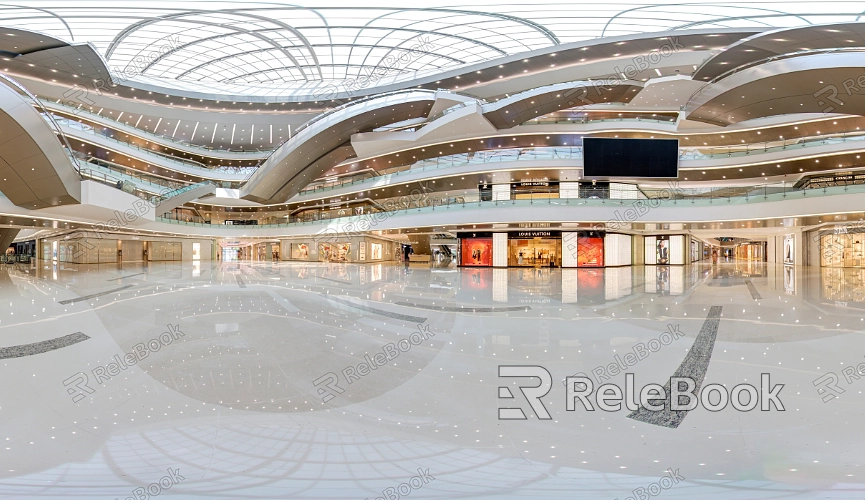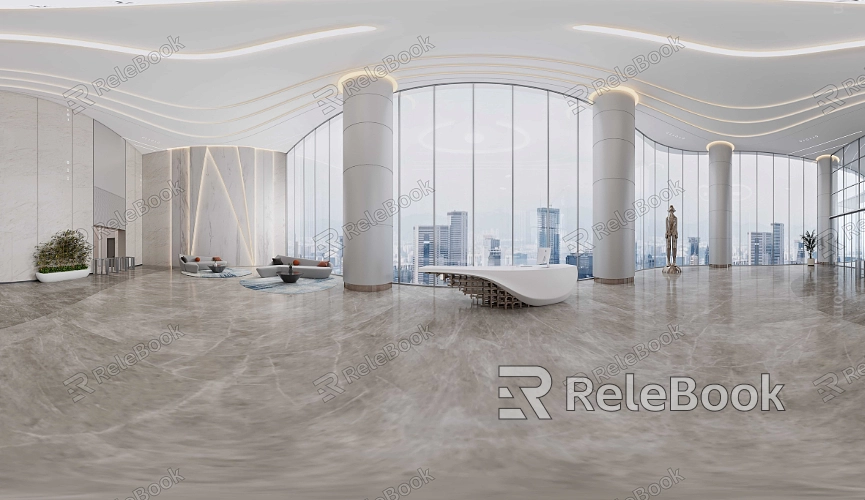What Does the HDR in HDR Textures Mean
HDR textures are widely used in fields such as architectural visualization, game development, and film production to add rich lighting details and realistic environmental effects to virtual scenes. However, many designers may find themselves unsure about what “HDR” actually stands for. Understanding the true meaning of HDR and how it functions within textures is crucial for optimizing rendering results. This article explores what HDR means in the context of HDR textures and explains its applications and advantages in 3D software like Blender, 3ds Max, and Cinema 4D.

1. Definition and Background of HDR
Concept of High Dynamic Range: HDR, or High Dynamic Range, refers to the ability to increase the contrast and color depth of an image, allowing more detail to be preserved in both the brightest and darkest areas. Unlike traditional Standard Dynamic Range (SDR) images, HDR images can display a broader range of brightness levels, preventing issues like overexposed highlights or pitch-black shadows.
Application in Textures: In 3D rendering, HDR textures are typically used to simulate complex lighting environments found in the real world. These textures capture details from the darkest to the brightest areas of light, providing a more realistic representation of lighting in a scene. This technology is widely applied in rendering projects that require convincing light effects, such as architectural visualization and film effects.
2. Advantages of HDR Textures
Enhanced Lighting Quality: Using HDR textures can significantly improve the lighting quality of a scene. With a broader range of brightness levels, HDR textures allow for smoother transitions of light, avoiding the harsh lighting cuts often seen with traditional textures. This adds depth to the scene, making the rendered results more lifelike.
Increased Scene Immersion: HDR textures do more than just increase brightness; they retain more detailed information, especially in bright and shadowed areas. This makes the scene appear more three-dimensional and profound during rendering, better capturing the viewer's attention and enhancing their sense of immersion.
3. Application of HDR Textures in Different 3D Software
Blender: Blender, a free and open-source 3D software, supports the loading and processing of HDR textures. Designers can use Blender’s node editor to flexibly adjust the exposure, contrast, and color mapping of HDR textures to achieve the desired rendering effects.
3ds Max: Widely used in architectural and animation production, 3ds Max’s powerful rendering engine fully leverages the benefits of HDR textures. Designers can load HDRI (High Dynamic Range Image) files into the scene for environment lighting or as a background, enhancing the scene’s realism.
Cinema 4D: Cinema 4D supports the use of HDR textures and offers built-in tone mapping tools to optimize the brightness and contrast of the textures, resulting in more refined and detailed renderings.If creating high-quality HDR images feels too complex or time-consuming, or if you’re unsure where to start, consider visiting Relebook. At https://textures.relebook.com/, you can easily download premium HDR resources and import them into Blender, 3ds Max, and Cinema 4D, significantly enhancing the quality of your work.

4. Optimizing HDR Textures for Rendering Needs
Selecting the Right HDR Texture: Choosing the appropriate HDR texture based on project requirements is vital. For example, nighttime scenes might require low-light HDR textures, while daytime scenes would benefit from high-brightness textures. Designers should select textures that match the characteristics of the scene to ensure the quality of the final rendering.
Adjusting Exposure and Contrast: In various 3D software, designers can tweak the exposure and contrast of HDR textures to better suit the lighting needs of the scene. Proper exposure and contrast settings can effectively prevent issues like overexposure or inadequate lighting.
Tone Mapping Application: Tone mapping is a critical step in HDR rendering. By correctly applying tone mapping, the brightness range of HDR textures can be compressed to fit within the display range of devices while retaining more detail and depth. This plays an important role in enhancing the overall quality of the rendering.
5. Challenges and Solutions with HDR Textures
Handling Overexposure: Designers might encounter overexposure issues when using HDR textures, leading to distorted rendering results. Adjusting exposure settings and utilizing tone mapping tools can effectively control overexposure.
Avoiding Color Distortion: Due to the wide color range of HDR textures, color distortion can sometimes occur. Designers can adjust white balance and color saturation to ensure accurate color representation that harmonizes with the scene.
By understanding and applying HDR textures effectively, designers can significantly enhance the lighting quality and realism of their rendering projects. If creating high-quality HDR images seems too complex or time-consuming, or if you’re unsure where to start, consider visiting Relebook. At Relebook, you can easily download top-notch HDR resources and seamlessly integrate them into Blender, 3ds Max, and Cinema 4D, greatly improving the quality of your work.

